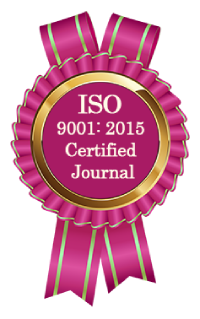
World Journal of Pharmacy and
Pharmaceutical Sciences
( An ISO 9001:2015 Certified International Journal )
An International Peer Reviewed Journal for Pharmaceutical and Medical Research and Technology





 |
|||||||||||||
|
| All | Since 2020 | |
| Citation | 6651 | 4087 |
| h-index | 26 | 21 |
| i10-index | 174 | 83 |
 Search
Search News & Updation
News & Updation
FORMULATION AND OPTIMIZATION OF NANOSTRUCTURED LIPID MATRICES OF REPAGLINIDE USING FACTORIAL DESIGN
Maulik P Talsania, GS Shantha Kumar*, Divakar Goli, Roopa Karki,Venkatesh DP
ABSTRACT The purpose of the present research work was to overcome the poor solubility of repaglinide, reduce dosing frequency and increase the bioavailability by formulating repaglinide nanostructured lipid matrices and subject the formulation for optimization by using factorial design. Repaglinide, an antidiabetic drug is used for the management of type II diabetes mellitus. It is practically insoluble in water and undergoes hepatic first pass metabolism and hence shows bioavailability of 56%. It is having short half-life of 1 h. Repaglinide NLCs were formulated by using different lipid: co-emulsifier ratio and surfactant ratio using factorial design. Prepared repaglinide nanostructured lipid carriers were characterized for FT-IR study, DSC study, entrapment efficiency, in vitro drug release, particle size analysis, SEM study, zeta potential, polydispersity index, in vivo antidiabetic study and stability studies. FTIR and DSC studies showed there is no interaction of drug with lipids and polymers. Average particle size was found to be in the range of 10.38 to 200.68 nm. SEM studies revealed that particles were irregular in shape and rough in nature. Zeta potential was found to be in the range of -28.65 to -58.32 mV showed good stability of NLCs. Highest entrapment efficiency and cumulative drug release of 85.460.041% and 86.160.45% was predicted. In vivo antidiabetic study for blood glucose level showed an effective marked decrease in blood glucose level of repaglinide NLCs (F6) on 3rdand 7th day as compared to repaglinide standard. The results showed no or little change in entrapment efficiency and cumulative drug release before and after stability studies. Keywords: Repaglinide, lipid, nanostructured lipid carrier, zeta potential, Blood glucose level, polydispersity index. [Download Article] [Download Certifiate] |
